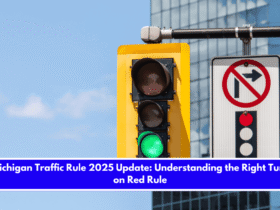Recent analyses have placed Soldotna, Alaska, among the state’s poorest cities, but the full economic picture is nuanced. While Soldotna is sometimes cited as the “poorest city” in Alaska based on specific metrics, a deeper look at the data reveals both challenges and context for this community.
A Snapshot of Soldotna
Soldotna is the county seat of Kenai Peninsula Borough, with a population of about 4,725 in 2025—a figure that reflects steady growth over recent years. The city is a regional hub, situated at the junction of major highways and serving as a center for retail, healthcare, and education for the central Kenai Peninsula.
Poverty and Income: The Numbers
- Poverty Rate: Recent data shows that Soldotna’s poverty rate is about 18.5%—significantly higher than the state average for many cities and boroughs. This means nearly one in five Soldotna residents lives below the federal poverty line.
- Median Household Income: In 2023, Soldotna’s median household income was $62,984, down from $67,365 in 2022—a notable decline of 6.5% in a single year. The average household income is reported as $84,254, but this figure includes a wide range of incomes and is higher than the median due to higher-earning households pulling up the average.
- Per Capita Income: The per capita income is about $44,617, which is slightly above the state median of $43,069.
Why Is Soldotna Called the Poorest City?
The label “poorest city” is often applied to Soldotna when comparing cities of similar size and available data. While other regions—like the Kusilvak Census Area—have much lower incomes and higher poverty rates, these are not technically cities but larger county-equivalent areas. Among cities with populations over 2,000, Soldotna stands out for its high poverty rate relative to its median income.
However, it’s important to note that Soldotna’s median income is still above the state median for individuals, and the city’s economic challenges are not as severe as those in some of Alaska’s most remote and rural regions, where poverty rates can be much higher and access to services far more limited.
Demographic and Economic Context
- Ethnic Composition: Soldotna is predominantly White (about 79%), with smaller populations of Native American, Asian, and multiracial residents.
- Employment and Commute: Most residents drive alone to work, with an average commute time of just over 12 minutes. The city’s economy is supported by retail, healthcare, and local government, with Kenai Peninsula College and Central Peninsula Hospital serving as major employers.
- Household Structure: About 30% of households have children under 18, and the average household size is 2.38 people.
What Does This Mean for Residents?
A high poverty rate in a city like Soldotna points to economic vulnerability for a significant portion of the population. The recent decline in median household income may signal challenges such as job losses, rising costs, or shifts in the local economy.
However, Soldotna’s role as a regional service center provides some stability and opportunities for employment and community support.
While Soldotna is sometimes identified as Alaska’s poorest city based on available data, the reality is more complex. The city’s poverty rate is high, and its median household income has recently declined, but it remains a vital hub for the central Kenai Peninsula.
Understanding these numbers in context helps paint a more accurate picture of the challenges and strengths of Soldotna and its residents.
Sources:
- https://datausa.io/profile/geo/soldotna-ak
- https://worldpopulationreview.com/us-cities/alaska/soldotna
- https://en.wikipedia.org/wiki/Soldotna,_Alaska
- https://datacommons.org/place/geoId/02122











Leave a Reply